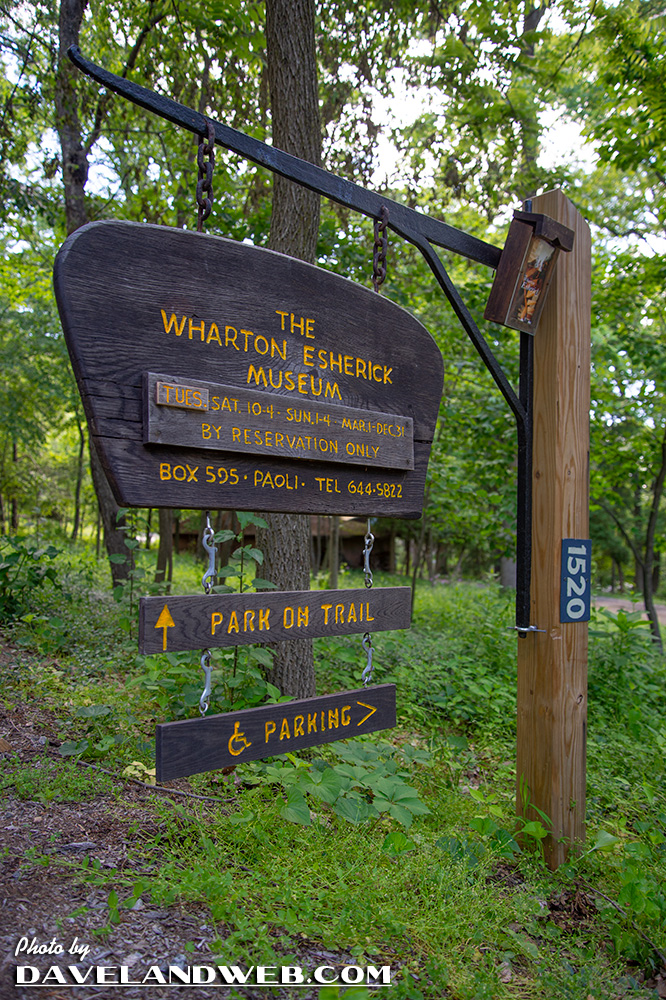
For years, my mother has talked about us going to the Wharton Esherick Studio and Museum in Paoli, Pennsylvania, but unfortunately, it is typically closed when I am in town during the winter months. Changing things up this year, a June visit allowed me to finally experience his Arts and Crafts style studio.
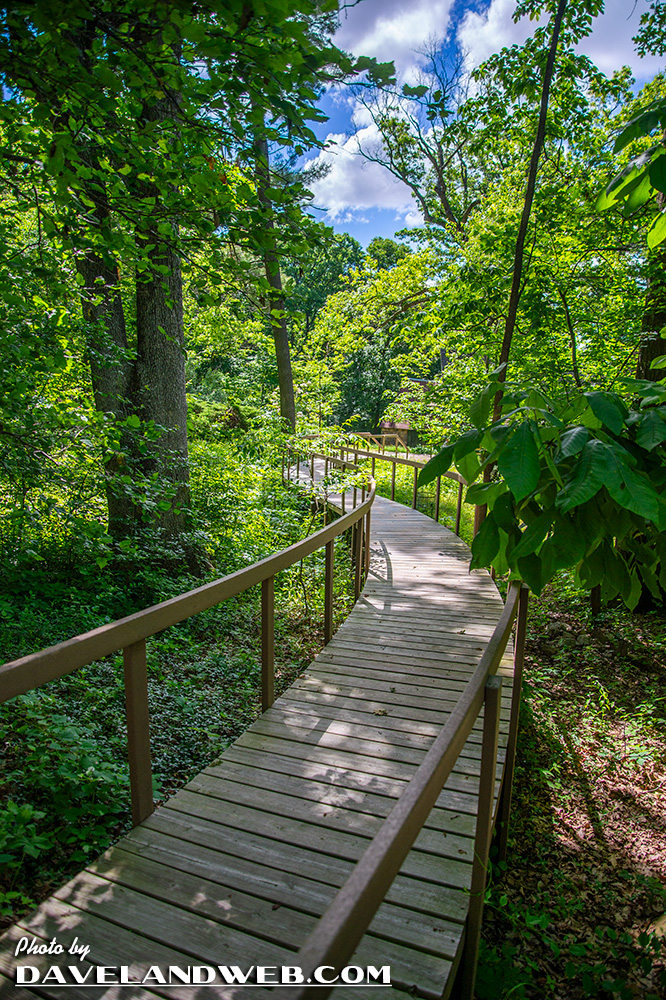
Born in Philadelphia, Esherick studied painting at the Philadelphia Museum School of Industrial Arts (now the University of the Arts) and at the Pennsylvania Academy of the Fine Arts. In 1913 he moved to a farmhouse near Paoli, Pennsylvania to pursue his painting career. He began carving decorative frames for his paintings in 1920; when he realized that the frames were more popular than the paintings, he switched to sculpture. Focusing on wood and metal working, he received commissions for Expressionist furniture and interiors, creating furniture that passed as sculpture, and sculpture that functioned as furniture, bridging the gap between art and craft.
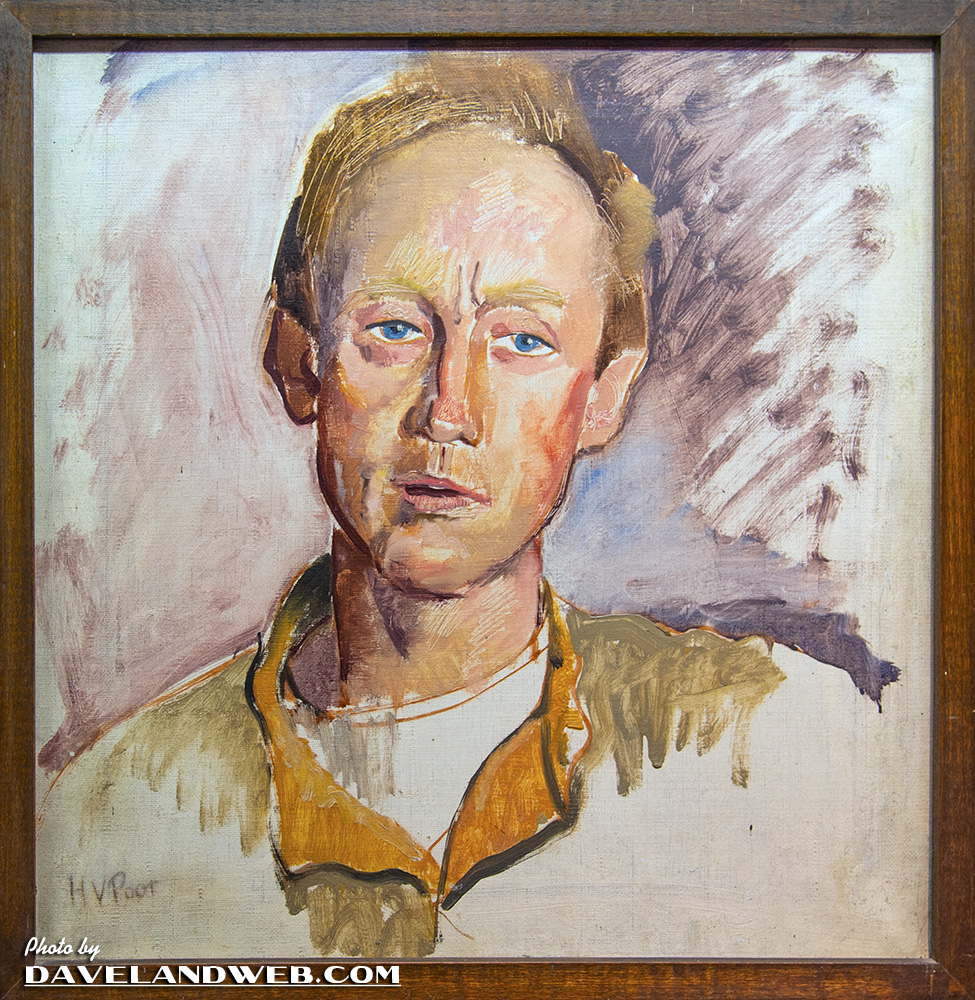
I have a feeling I would have liked Esherick; reading the book written by his son-in-law, one gets the idea that he had a very dry sense of humor and no tolerance for BS. At a time when one's ancestors and social status were extremely important, he liked to tell people that he "traced his lineage to a whore in Baltimore."
This painting of Esherick was created by his friend Henry Varnum Poor in 1932 and hangs in the Expressionist log cabin style garage on the property that was built in 1928. It now functions as the museum's visitor center, seen on the left-side of this photo:
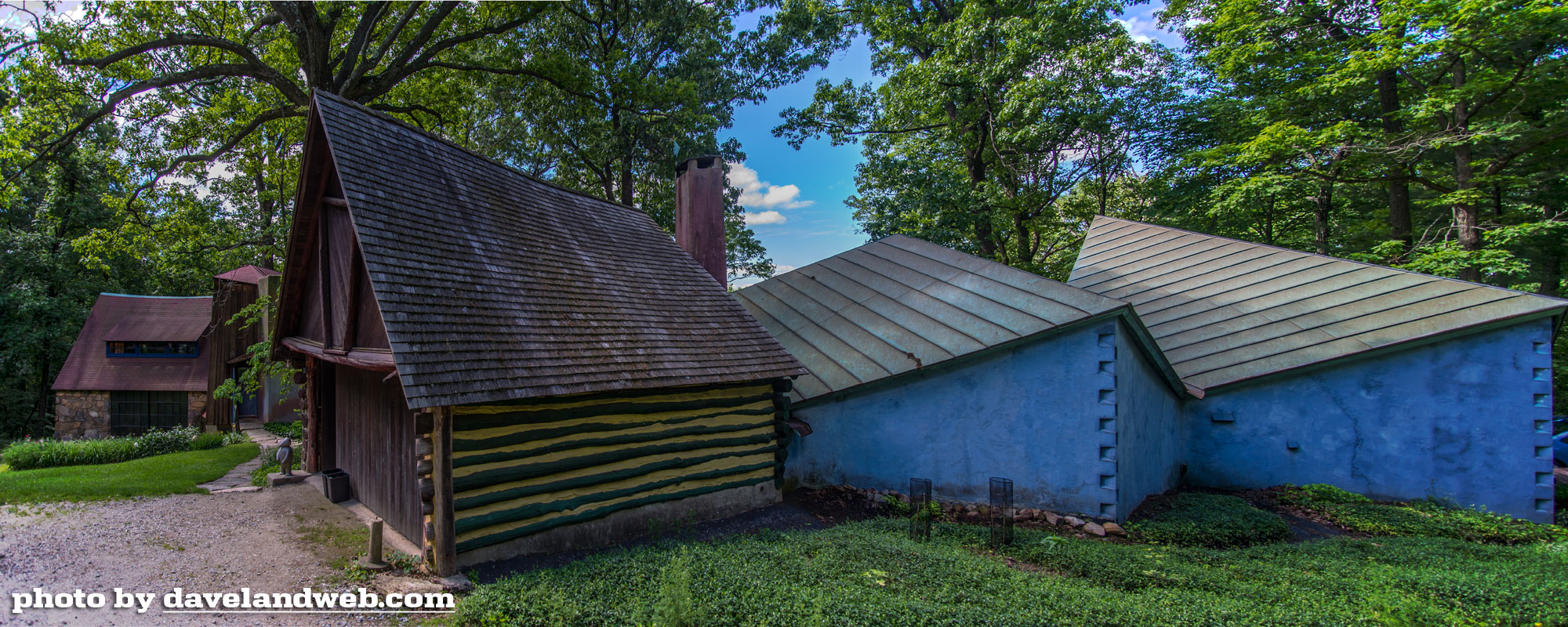
A Genuine FauxD© shot of the studio itself:
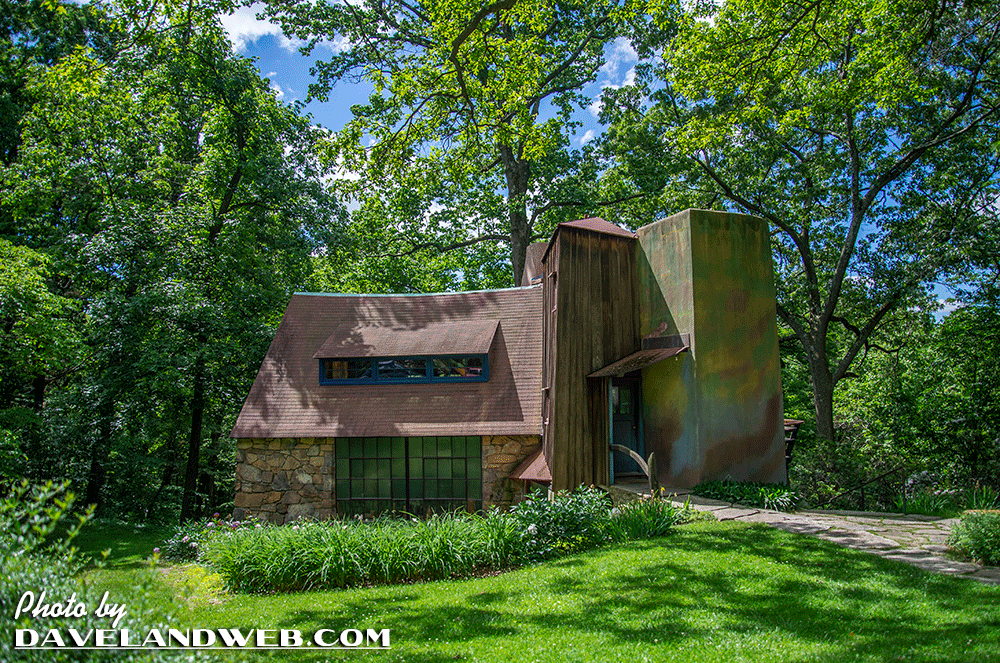
Before the tour began, I enjoyed walking around the property, catching the details of Esherick's work, like the dovetailing on this wooden bench:
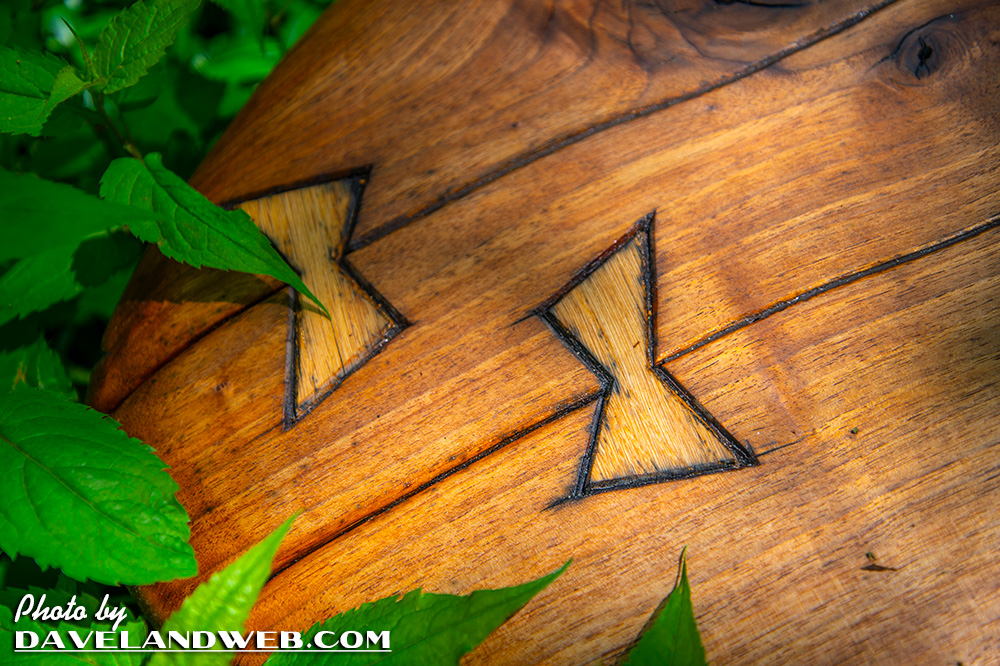
Because there are no straight lines in nature, it is rare that you would see a true 90 degree angle in any of Esherick's work.
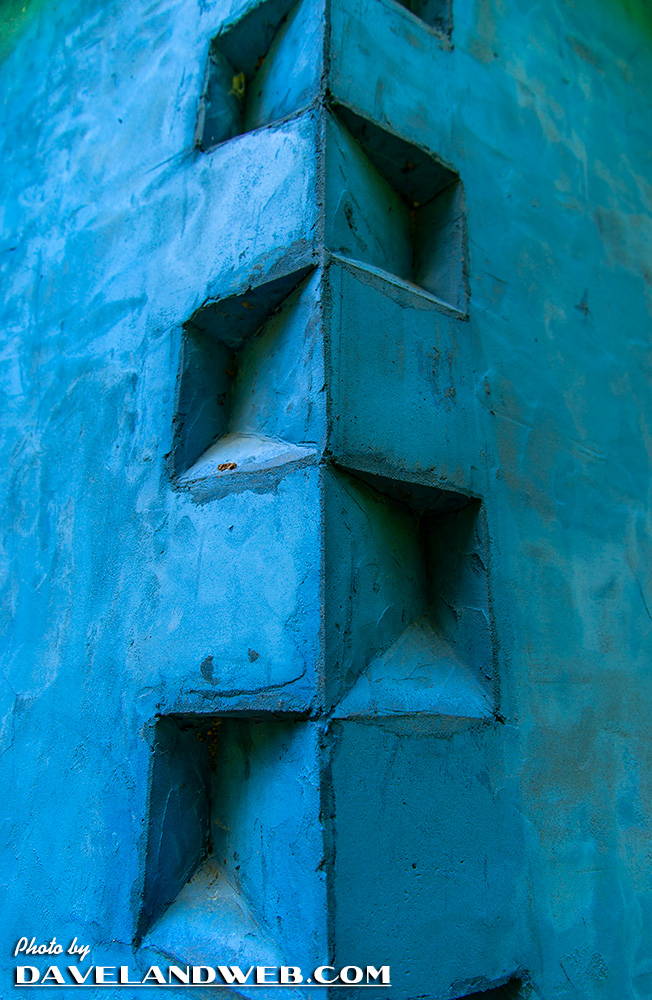
A photo of the artist's initials and those of architect Louis Kahn, who was hired in 1955 because Esherick needed to collaborate with a licensed architect to create an addition to his workshop. Esherick likened architects to "the east end of a horse headed west," getting annoyed that they put their designs on paper and expected others to fulfill their ideas without any further input.
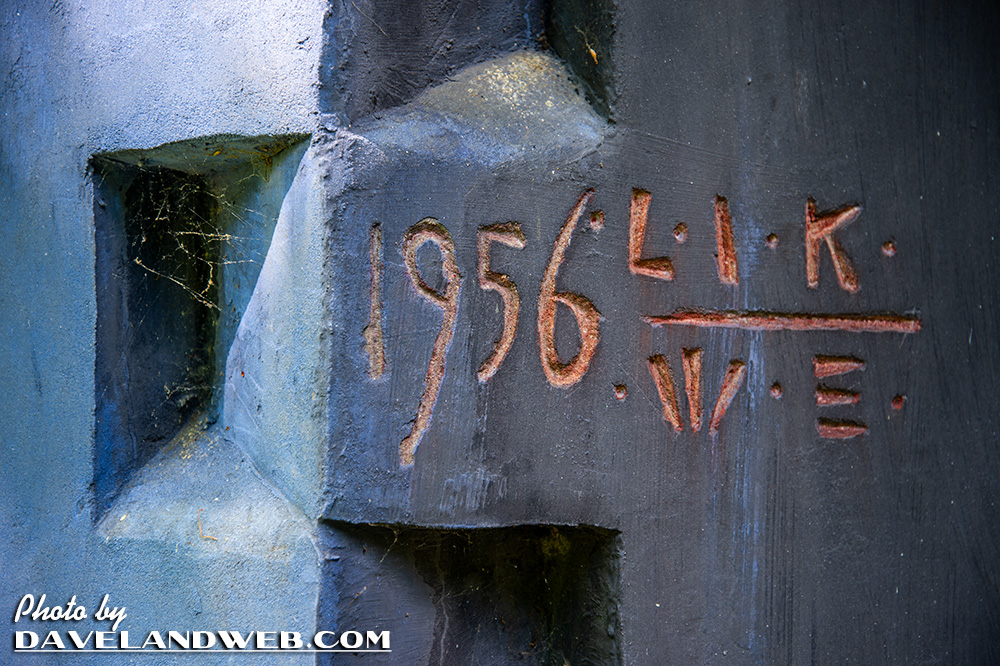
From the back of the property, Kahn's addition still bears the mottled-style of fresco painting that was used to make it blend into the hillside.
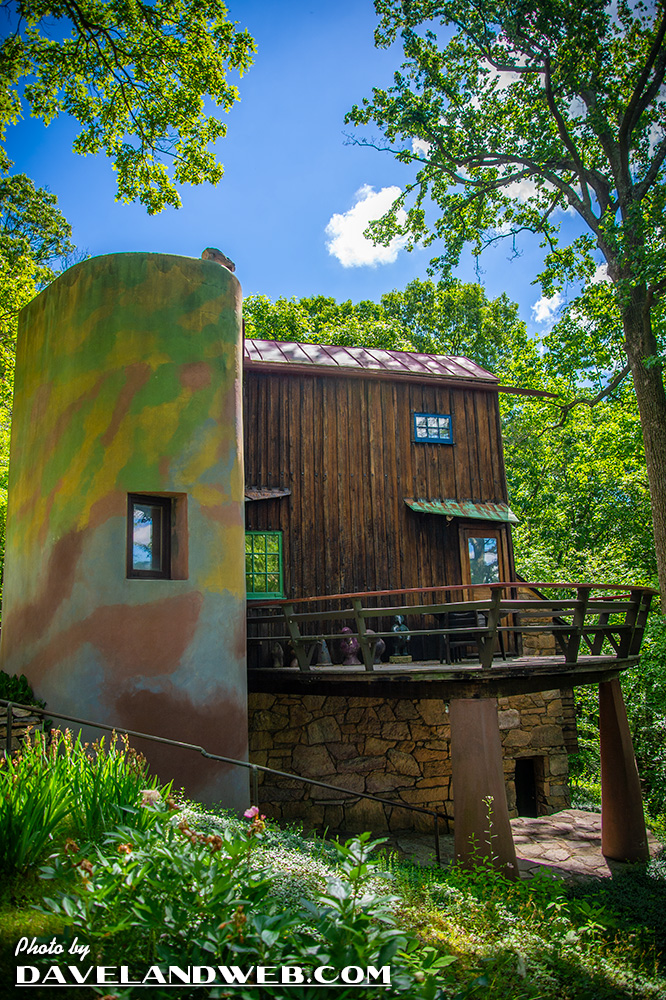
Esherick hired mason John Kulp to assist with the laying of these plum, gold, and grey flecked stones. Kulp insisted on the mortar being flush with the stones; Esherick disagreed. At night, the artist would remove the visible mortar by hand so that the shape of each stone would be more pronounced.
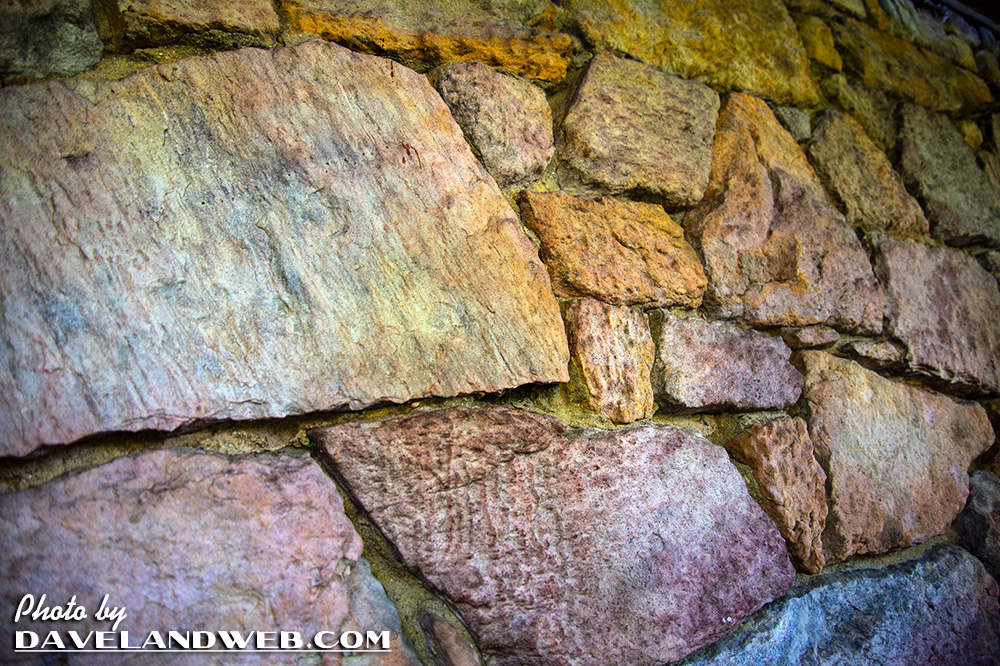
Looking up from below, the bright sunshine was peaking through the wooden slats of the deck...
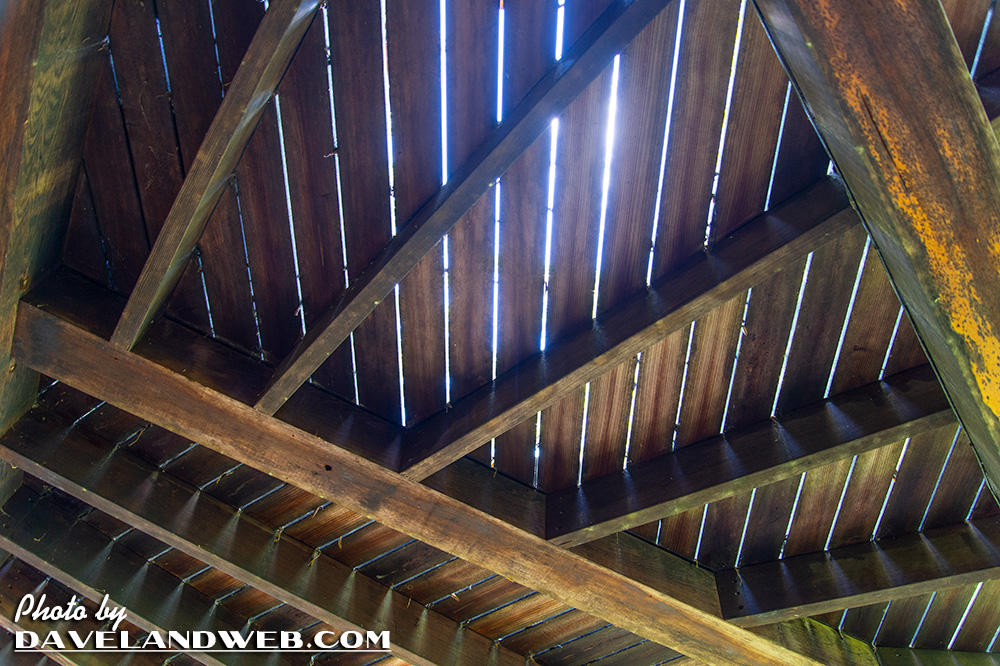
which provided a look back at the garage and Kahn designed workshop:
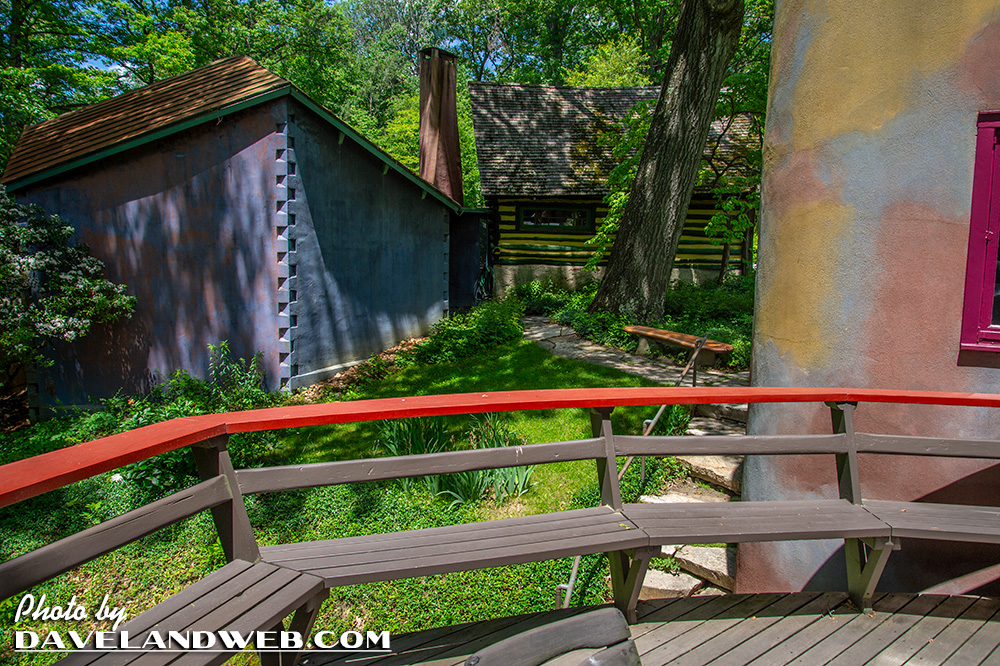
The entry door for the kitchen and dining room:
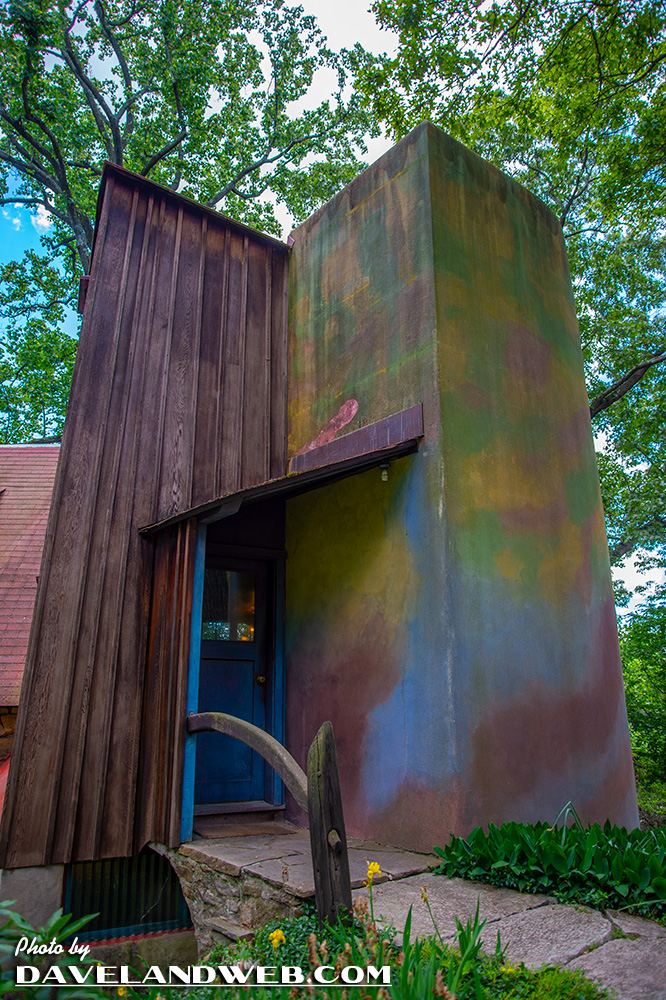
Unable to take photos inside, I cannot show any images of the cork-screwing red oak staircase that is probably his most famous piece of work. A magazine writer once described it as rising "like a DNA strand fresh from the primordial soup." The only interior shot I have is of the dining room/kitchen area:
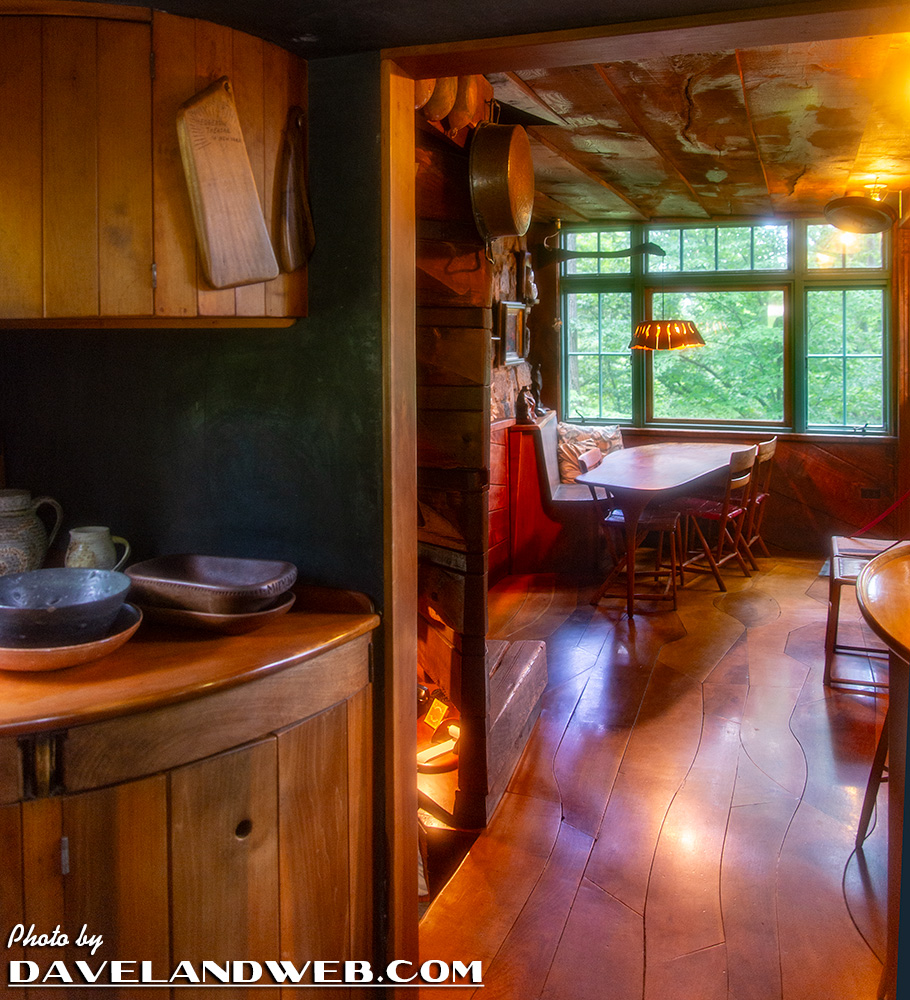
Every time he built a table to eat at, a client would want to purchase it. Finally, he built a table with one leg and permanently affixed it to the wall and floor. Note the swing-arm adjustable light he created above the table:
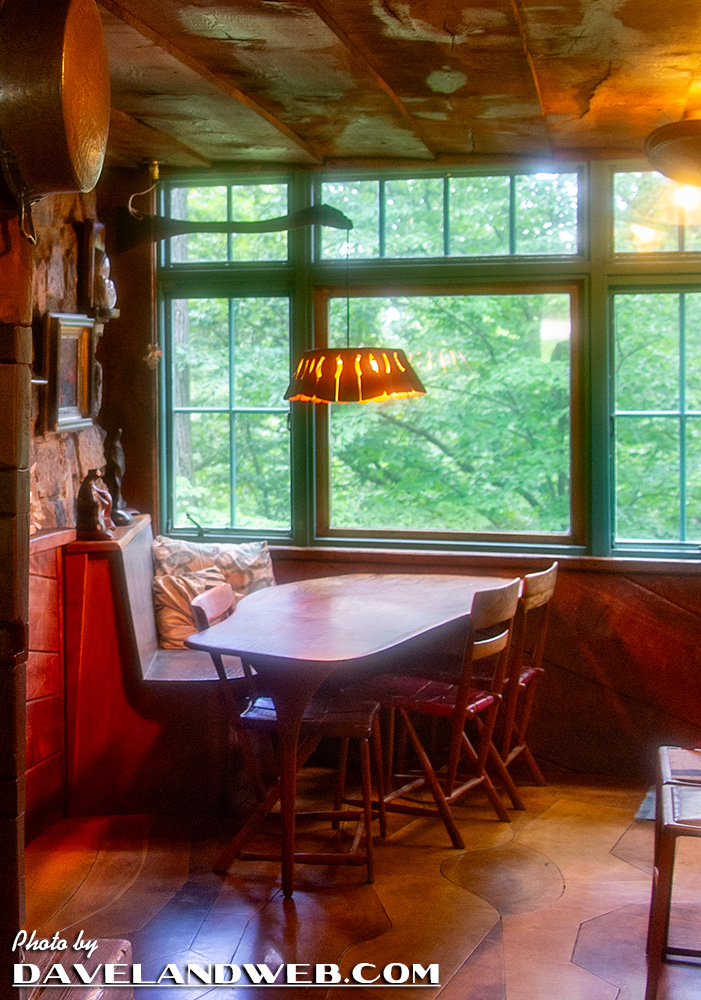
I remember my life-changing visit to Frank Lloyd Wright's studio in Oak Park, Illinois. I have to say that Esherick's studio is just as inspiring.
See more Daveland Wharton Esherick studio photos at my main website.

No comments:
Post a Comment